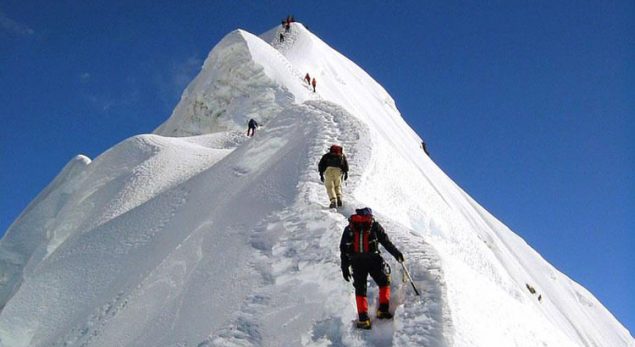Nepal's Six Thousanders, mountains that rise between 6,000 and 6,999 meters above sea level, are celebrated for their accessibility, stunning vistas, and the adventurous opportunities they offer to climbers and trekkers. While not as daunting as the Eight Thousanders or even the Seven Thousanders, these peaks provide an ideal introduction to high-altitude mountaineering, offering both technical challenges and breathtaking beauty. Island Peak (Imja Tse) at 6,189 meters is one of the most popular trekking peaks in Nepal. Located in the Everest region, it offers climbers an opportunity to experience high-altitude climbing with relatively straightforward routes. The ascent provides spectacular views…
Nepal’s Six Thousanders, mountains that rise between 6,000 and 6,999 meters above sea level, are celebrated for their accessibility, stunning vistas, and the adventurous opportunities they offer to climbers and trekkers. While not as daunting as the Eight Thousanders or even the Seven Thousanders, these peaks provide an ideal introduction to high-altitude mountaineering, offering both technical challenges and breathtaking beauty.
Island Peak (Imja Tse) at 6,189 meters is one of the most popular trekking peaks in Nepal. Located in the Everest region, it offers climbers an opportunity to experience high-altitude climbing with relatively straightforward routes. The ascent provides spectacular views of Lhotse, Nuptse, and Ama Dablam, making it a favorite for those looking to extend their trekking experience.
Mera Peak, standing at 6,476 meters, is the highest trekking peak in Nepal and is renowned for its stunning panoramic views of five of the world’s highest mountains: Everest, Lhotse, Cho Oyu, Makalu, and Kanchenjunga. The climb is non-technical but requires good physical fitness and acclimatization, making it suitable for experienced trekkers aiming for their first high-altitude summit.
Lobuche East (6,119 meters) and Lobuche West (6,145 meters) are prominent peaks near the Khumbu Glacier. Lobuche East is often climbed by trekkers seeking to test their skills before tackling more challenging peaks, while Lobuche West is known for its more difficult routes, appealing to experienced climbers.
In the Annapurna region, Singu Chuli (6,501 meters), also known as the Fluted Peak, is a technically demanding climb that requires advanced mountaineering skills. The peak offers climbers a thrilling ascent with impressive views of the Annapurna range.
Kyajo Ri (6,186 meters) in the Khumbu region is another notable Six Thousander, known for its challenging climbing routes and stunning scenery. Its remote location offers a sense of solitude and wilderness, attracting climbers looking for a less crowded ascent.
These Six Thousanders not only provide excellent climbing experiences but also offer the chance to explore Nepal’s diverse landscapes and rich cultural heritage. The trails to these peaks often pass through picturesque villages, lush forests, and vibrant rhododendron valleys, enhancing the overall adventure with cultural and natural splendor.

Larkya Peak Climbing

Pokalde Peak Climbing

Hiunchuli Peak Climbing

Dorje Lakpa Expedition

Mount Thamserku Expedition

Mount Tukuche Expedition

Nirekha peak climbing

Mount Kanjiroba Expedition

Sita Chuchura Expedition






